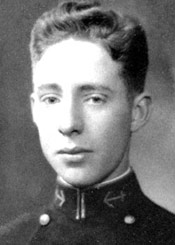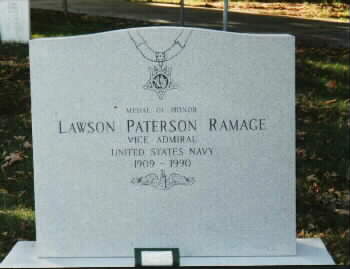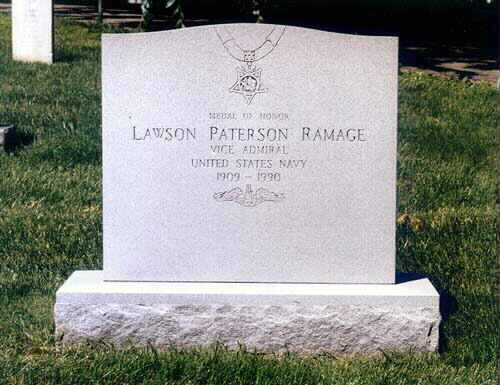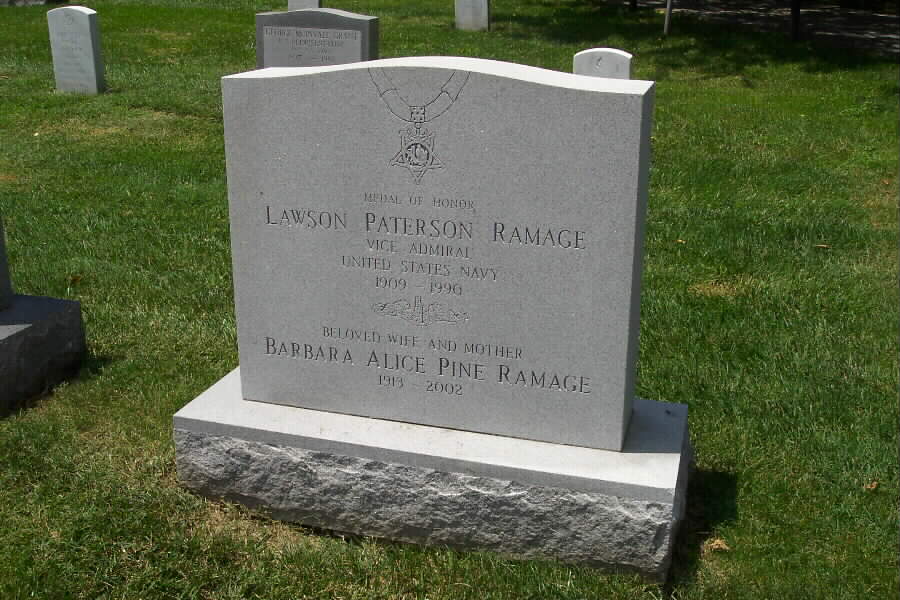6 December 2004:
Sub Museum To Open New Exhibit Honoring Medal Of Honor Recipients
Ronald E. Williams keeps the awards and mementoes of his submarine service in a room at his home in Mystic. Included in his collection are two models of the USS Parche, which Williams was aboard when it battled a heavily armed Japanese convoy.
By ROBERT A. HAMILTON
Navy/Defense/Electric Boat
Published on 12/6/2004
Groton, Connecticut — When the Submarine Force Museum opens its newest exhibit this week on the eight submariners who received the Medal of Honor, two of the local guests will have first-hand knowledge of what it takes to earn such a distinction.
Ronald E. Williams of Mystic and Carl Kimmons of Waterford were both crewmen on the USS Parche, SS 384, on a summer day in 1944 when then-Cmdr. Lawson Paterson Ramage attacked a heavily armed Japanese convoy.
Both men earned the prestigious Presidential Unit Citation for their role in the mission, as well as recognition from Ramage in the form of a hand-written note on paper embossed with the Medal of Honor. Ramage, in the note, said the medal “was accepted from the President of the United States as the nation's tribute to a fighting ship and her courageous crew.”
Ramage remained on the bridge by himself during the attack, frenetically maneuvering the Parche into firing position and trying to avoid return fire. At one point, a ship in the convoy tried to run him over. He heeled the ship over sharply, passing within 50 feet of the enemy and directly into the path of a larger cargo ship. He fired three torpedoes at the ship, damaging it, then turned Parche around and fired another torpedo that sent it to the bottom.
Ramage's brazen tactics took the enemy completely by surprise. The Japanese ships, unable to lower their gun barrels enough to hit the submarine that passed so close between them, damaged each other. Parche emerged from the fray 46 minutes later without a scratch.
“I don't think he was reckless,” said Williams, who, as a machinist mate, reloaded the stern torpedo tubes during the battle. “I think he just had great confidence in his ability.”
Kimmons said he prefers not to talk about the war, and since he was not on any of the torpedo reload teams, he doesn't remember much about it. He said that not long after Ramage died in 1990, he visited Ramage's grave in Arlington National Cemetery.
Williams said at the time of the battle, nobody was thinking about medals, only about getting through the next few minutes alive.
Williams grew up in western Pennsylvania and joined the Navy in 1940 because the Army would not take him at 17 years old. He was originally assigned to the USS Stack, a destroyer first deployed in the North Atlantic and, after the war broke out, in the South Pacific.
He decided to volunteer for Submarine School because he wanted a chance to visit again with his girlfriend, Helen — they were later married — and Parche was his first and only wartime submarine assignment.
The thing he remembers most about the battle in July 1944 was the captain ordering the tubes reloaded in the midst of the fight.
“It had never been done before,” Williams said. “Before that, submarines would dive to calm water before they would reload. But we did it right in the middle of the action.”
Ramage wanted to fire more torpedoes at the targets around him. The reload crews, though, had to worry about wrestling 600 pounds of high explosives in bulky metal pipes into a firing tube. One misstep, and they could have sunk the ship themselves.
“You didn't think about it at the time, because everyone was too busy really,” Williams said. Though he wouldn't learn until hours later during a briefing what Ramage had accomplished, he knew the ship was being maneuvered wildly — the men in the rear-facing torpedo room could barely stand the ship was whipping back and forth so violently.
“You had to hang onto something all the time,” Williams said.
When they finally learned what had been done, the entire crew broke into a cheer … though Williams slyly suggests that at least part of the reason for the celebration was that the ship had to head back to Pearl Harbor to reload with torpedoes, which meant two weeks of rest and recreation.
Williams stayed with the Parche through the rest of the war. By the time he got off the submarine, he had earned two Bronze Stars and his Presidential Unit Citation.
He later made the transition to nuclear submarines, serving as chief of the boat on the USS Seadragon during its first Atlantic-to-Pacific crossing over the North Pole, and then earned a commission. He retired in 1971 from his last job as test director of submarine missile firings at Cape Kennedy, having risen to lieutenant commander.
Today, two models of Parche form the nucleus of his submarine service mementoes. Hanging on the wall of the room where he keeps his collection is the note from Ramage, who wrote that every member of the crew has an equal share of the Medal of Honor, “which he holds in trust for you with great pride and respect.”
Born at Monroe Bridge, Massachusetts, January 18, 1909, he entered the Navy from Vermont and was awarded the Medal of Honor in World War II for services as Commander, USS Parche in the Pacific on July 31, 1944.
From a contemporary news report:
“Lawson P. Ramage, who won the Medal of Honor as a submarine commander in World War II, and was one of the Navy's most decorated submariners, died of cancer at his home in Bethesda, Maryland, April 15, 1990, at the age of 81. A 1931 graduate of the United States Naval Academy, he retired in 1969 as commander of the Navy Military Sea Transportation Service, the ocean-going transport branch of the Armed Forces.
“Most of his service was in submarines. He earned the Medal of Honor after a submarine that he commanded, the USS Parche, attacked a heavily escorted Japanese convoy in the South China Sea off Taiwan on July 31, 1944, sinking two enemy vessels and damaging several others. The Parche's crew received a Presidential Unit Citation, and President Franklin D. Roosevelt personally presented Ramage with the Medal of Honor on January 10, 1945.
“In June 1942, as commander of the submarine USS Trout, he won the Navy Cross for valor in action t Midway, Truk, Solomons and the South China Sea. The Trout's crew was also awarded a Presidential Unit Citation.
“He was stationed at Pearl Harbor when the Japanese attacked there on December 7, 1941. He served as navigator aboard the USS Grenadine from January to June 1942, and was awarded the Silver Star for “conspicuous gallantry and intrepidity” as navigator in a patrol of enemy controlled waters.
“After being commissioned as an Ensign at Annapolis 1931, he spent the next four years on several ships before taking submarine training and serving as Executive Officer aboard the USS Sands. After World War II, he served in several submarine commands. In April 1963, as Deputy Commander of Submarine Forces, Atlantic Fleet, he led the search operations for the atomic submarine USS Thresher, which sank in the Atlantic, 220 miles east of Boston while making deep-sea dive tests, with a loss of 129 lives. He was an expert witnesses in the ensuing Navy inquiry regarding that incident. Promoted to Vice Admiral later that year, he became Deputy Chief of Naval Operations and Commander, Military Sea Transportation Service in 1967. Survivors include his wife of 55 years, the former Barbara Alice Pine (daughter of Coast Guard Vice Admiral James Pine); two sons, two daughters, two brothers, eight grandchildren and a great-grandson.”
He is buried in Section 7-A of Arlington National Cemetery, just a short distance from the Tomb of the Unknowns and the Memorial Amphitheater.
RAMAGE, LAWSON PATERSON
Rank and organization: Commander, U.S. Navy, U.S.S. Parche. Place and date: Pacific, 31 July 1944. Entered service at: Vermont. Born: 19 January 1920, Monroe Bridge, Massachusetts.
Citation:
For conspicuous gallantry and intrepidity at the risk of his life above and beyond the call of duty as commanding officer of the U.S.S. Parche in a predawn attack on a Japanese convoy, 31 July 1944. Boldly penetrating the screen of a heavily escorted convoy, Comdr. Ramage launched a perilous surface attack by delivering a crippling stern shot into a freighter and quickly following up with a series of bow and stern torpedoes to sink the leading tanker and damage the second one. Exposed by the light of bursting flares and bravely defiant of terrific shellfire passing close overhead, he struck again, sinking a transport by two forward reloads. In the mounting fury of fire from the damaged and sinking tanker, he calmly ordered his men below, remaining on the bridge to fight it out with an enemy now disorganized and confused. Swift to act as a fast transport closed in to ram, Comdr. Ramage daringly swung the stern of the speeding Parche as she crossed the bow of the onrushing ship, clearing by less than 50 feet but placing his submarine in a deadly crossfire from escorts on all sides and with the transport dead ahead. Undaunted, he sent 3 smashing “down the throat” bow shots to stop the target, then scored a killing hit as a climax to 46 minutes of violent action with the Parche and her valiant fighting company retiring victorious and unscathed.
Michael Robert Patterson was born in Arlington and is the son of a former officer of the US Army. So it was no wonder that sooner or later his interests drew him to American history and especially to American military history. Many of his articles can be found on renowned portals like the New York Times, Washingtonpost or Wikipedia.
Reviewed by: Michael Howard




